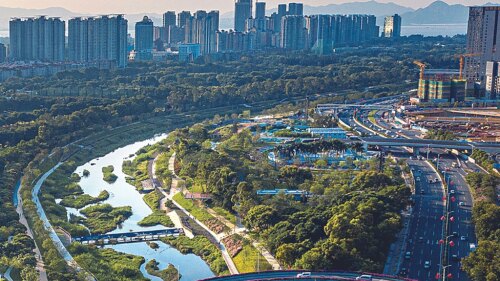Scaling Infrastructure
180 pages. Paperback, $29.95
Infrastructural Monument
168 pages. Paperback, $29.95
MIT Center for Advanced Urbanism
Princeton Architectural Press
37 E. Seventh Street, New York, NY 10003; www.papress.com
Infrastructure is a curious thing. Its intrinsic role is one of practical support, but it can and often does take a civic center stage: it is necessarily always a workhorse but often also a prize stallion. It was accordingly a rich theme for the MIT Center for Advanced Urbanism’s two inaugural conferences, whose proceedings are now available in two intriguing volumes, concerning both the rote realities of appropriate functionality, Scaling Infrastructure, and the possibilities of civic and connective consequentiality, Infrastructural Monument.
The essays in the former seek to examine a variety of questions of how to stretch, compress, tweak, and overhaul infrastructure not merely in response to population decline or increase, but also to changes in technology and modes of life.
The management of decline requires a set of nimble solutions. Sonja Beeck, CEO of Chezweitz, offered, “There is a joke that it’s cheaper to take a gallon of water into the next village by taxi than to pump it through the pipes.” Existing physical infrastructure or frames may well be inefficient and require revamping. She detailed metropolitan consolidation of resources in Saxony; Dave Walling, the mayor of Flint, Michigan, outlined strategies to encourage the compression of urban population such as to ease the provision of city services. Strategies for dealing with surplus land also vary, from large-scale art to urban farming.
Infrastructure’s assumption of growth may be shortsighted; but often even when cities do grow, their sense of the future is inaccurate. Lawrie Robertson, cofounder of the Cities Consulting Group, noted that civic bodies are often “too shortsighted about the extent to which the technological paradigms forming the basis of our city systems and designs will change.”
Several essays note that the rise of car sharing and corporate buses has offered a new complication beyond binaries of private or public transport, furnishing a shared infrastructure that is both consequential in itself and a valuable trove of data for transport planners.
Infrastructure shouldn’t merely be data-crunching, however, as the second volume, Infastructure Monument, attests. Some infrastructure is intrinsically alienating: the container port is not about to become a walkable neighborhood, but much infrastructure is or can prove a very meaningful agora for any city or society. A new subway spur in Copenhagen, for instance, is not just a buried railroad, but also becomes a spine for its neighborhood. A Chinese floodwall isn’t simply built to hold back waters but also to stitch a community to its river. Intermodal transport terminals aren’t only human switching boards, but also can serve as valuable connective fabric.
In many ways, infrastructure planning should be open to the unexpected that might happen around it. Stan Allen accounted his philosophy of a park design for Taichung in Tawan as a “neutral scaffolding for the city to grow into.” It is often paradoxically in that space slightly beyond planning that infrastructure assumes its greatest consequence: “Everything we value about cities, it could be argued, arises as something in excess of designed intentionality or engineered performance.” Flexibility in infrastructure design and use isn’t merely a recipe for the economical use of public resources, it’s a formula for achieving much more—your utility might well become a monument if you simply try.
Anthony Paletta writes the Spaces column for the Wall Street Journal and contributes to Metropolis, Gizmodo, the Awl, the Daily Beast, and a variety of other publications.




